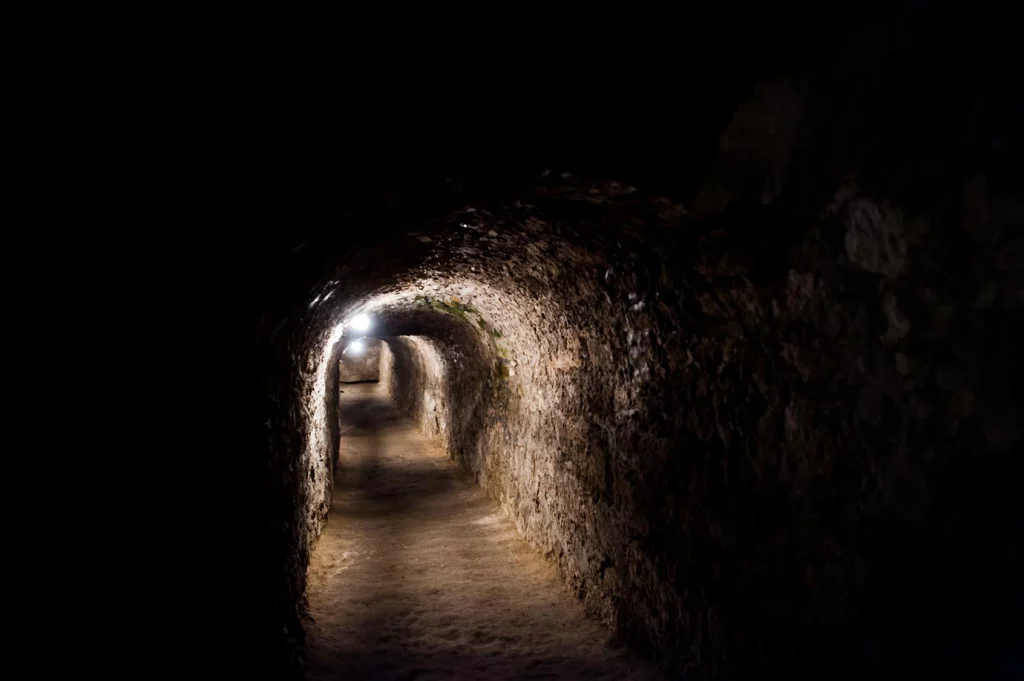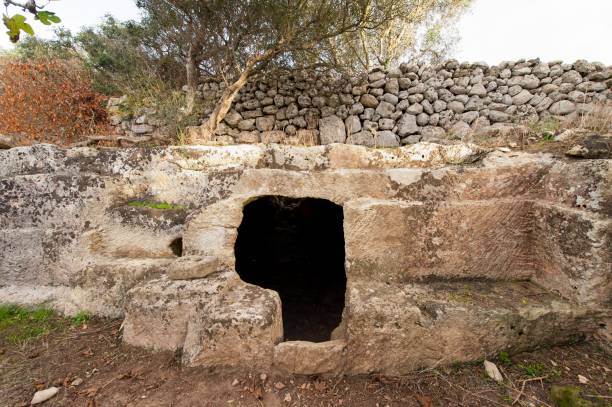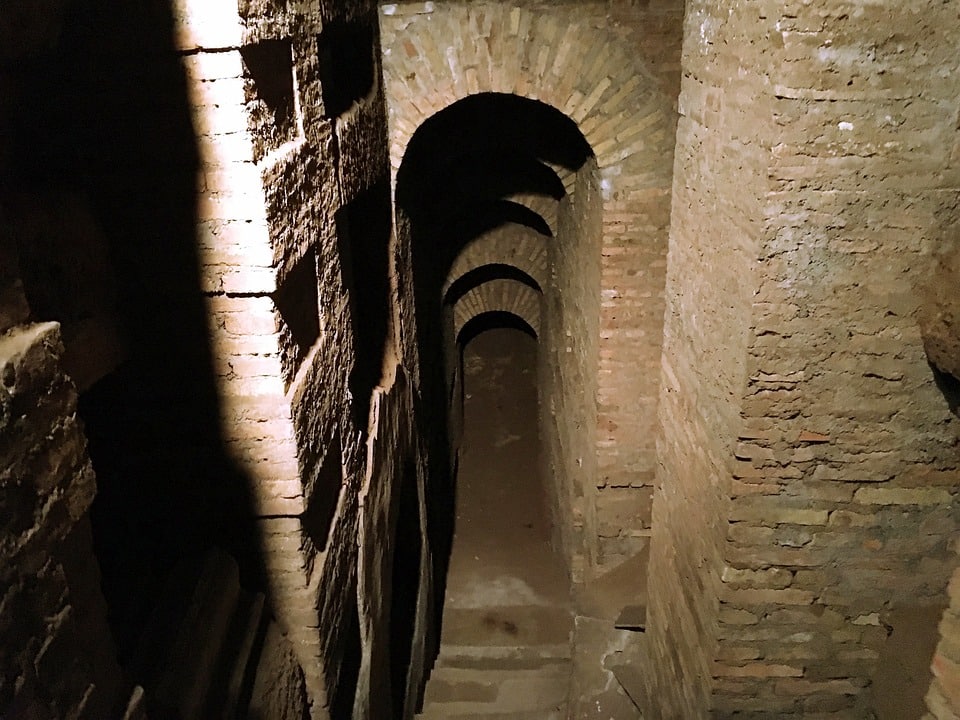Roman catacombs or Catacombe di Roma are underground places that served as burial sites for centuries. Nowadays, more than sixty ancient catacombs were found by archeologists in Rome and the outskirts of the city. Some catacombs emerged in the pre-Christian time, but the most known ones were founded by the first Christians. In these catacombs, they hold religious meetings prohibited by the authorities and buried the dead fellow-believers. Now the catacombs of Rome are popular tourist destinations that attract people from all over the world. Let’s choose the best Roman catacombs worth visiting.
Catacombs of Domitilla
The Catacombs of Domitilla is the largest catacombs in Rome. They were named after Flavia Domitolla, the noble woman who ordered the digging of the catacombs as a burial site. The Catacombs of Domitilla which are about 15 km include about 26,000 tombs. Since the 2nd century AD, the catacombs served as the final resting place for Roman citizens. Moreover, these are the only catacombs in the city that still have human remains. Another feature of the Catacombs of Domitilla is wall paintings. Here tourists can see both pagan and Christian images.
The basilica of Sts. Nereus and Achilleus
Nereus and Achilleus are Christian martyr saints who lived in the 2nd century AD. They were Roman guards who converted to Christianity, rejected pagan gods and left the military camp. The Christian neophytes were executed by decapitation. First their bodies rested in the Catacombs of Domitilla, but in the 4th century a separate basilica was erected above their tombs. Abandoned in the 9th century, it was found and reconstructed in modern times.

Christian catacombs
Despite the fact that the first catacombs in Rome were dug by the Jews, it was the Christians who created the vast majority of underground tombs. The catacombs were not just tombs. According to some scholars, they were used as meeting places for the city Christian community. Also, wall paintings can say a lot of how the first Christians perceived the world, what they really believed in and hoped for.
Paleochristian frescos
As was stated above, the catacombs in Rome are well known for their examples of early Christian art. At that time, the images that Christians painted on the catacomb walls were a mixture of pagan, Jewish and Christian motifs. To look at these syncretic images, people come to the catacombs from both Italy and other countries.
The Appian Way
The Appian Way or Via Appia is an ancient road connected Rome to the city of Brindisi. The road was named after the Roman statesman Appius Claudius Caecus. The old part of the road known as Via Appia Antica has several ancient catacombs along it. They were made by Roman pagans, Jews and Christians.

The Capuchin Crypt in Rome
The Capuchin Crypt is a very unusual and even scary sight in Rome. The Crypt is located under the small church Santa Maria della Concezione on the Via Veneto. It was founded in the 17th century by Capuchin monks. When a friar died, his body was buried in the crypt. But due to lack of space, the monks started a new tradition. The bones were exhumed and used to decorate the crypt. And the freed tombs took the bodies of recently deceased monks. Now, it is believed that the Capuchin Crypt contains remains of about 3,700 monks.
The Aqueduct Park
Near the Appian Way you will find the Aqueduct Park. Its picturesque landscapes and majestic ruins of the ancient aqueducts will be a good change of scene after the narrow and dark catacombs. In the Aqueduct Park, one may see a lot of local residents who come here for jogging, cycling or doing sport.
Why visit the catacombs in Rome?
Roman catacombs are a unique place. It is a good chance to explore the hidden, underground side of the Eternal City. The catacombs will suit those who search for a really spooky experience. This is a reign of death, where human remains lied for centuries. The Roman catacombs will also be interesting for art-lovers. Their walls are painted with images that combine pagan, Christian and Jewish elements. Moreover, such a trip is an opportunity to not only descend underground but to time travel as well.

How to get to the catacombs – the best tours
The Roman tourist agencies offer a lot of options for those who want to walk through the ancient catacombs. The experienced guides will provide you with all necessary information and will be ready to answer all the questions about the history, wall paintings and famous people buried there. Usually, the best tours are for groups with no more than 20 people. That’s an ideal number of visitors that will not make the narrow passages overcrowded.
What you need to know before visiting the catacombs of Rome
Now let’s get through some practical tips for visiting the catacombs. You will have to go underground, so don’t forget appropriate clothes. It is quite cold in the catacombs even in summer, so a light jacket is a must-have. Don’t forget about good shoes. The catacombs were built centuries ago, and walking there can be a little bit challengeable. A pair of comfortable sneakers will be okay. And yes, forget about visiting the catacombs if you are claustrophobic.
Pay attention, that there is a special dress code for those who visit the crypts. The knees and shoulders of a visitor must be covered, if only you don’t want to show disrespect for the dead monks.
Guided tours of the Roman catacombs and the Appian Way
There are several options for those who want to visit the Roman catacombs. For example, you can take a half-day walking tour. To do this, you should take a coach from Rome to the Appian Way where a local guide will show you the catacombs and other sights like the Aqueduct Park.
Another option is to take an e-bike tour. Apart from visiting the catacombs, you will get a cool opportunity to ride along the Appian Way enjoying the Roman countryside and fresh air.
Colosseum
The Colosseum that is probably the most famous Roman building also has some underground structures. For centuries the lower part was buried under the ground and debris and only in the 20th century it was revealed to the world. Now tourists have a chance to see what the underground part of the building looked like. Archeologists claim that in ancient times, there were utility rooms and complex mechanisms that made everything that happened in the arena even more spectacular.
So, speaking about Rome, one must remember the dual nature of this ancient city. Apart from the thing located on the surface, there are a lot of secrets hidden under the ground. Tours to the mysterious catacombs and crypts will help you to reveal the other, dark side of the Eternal City.











